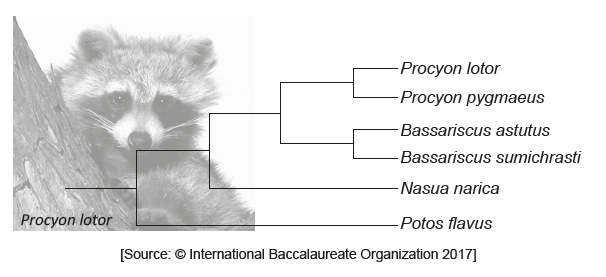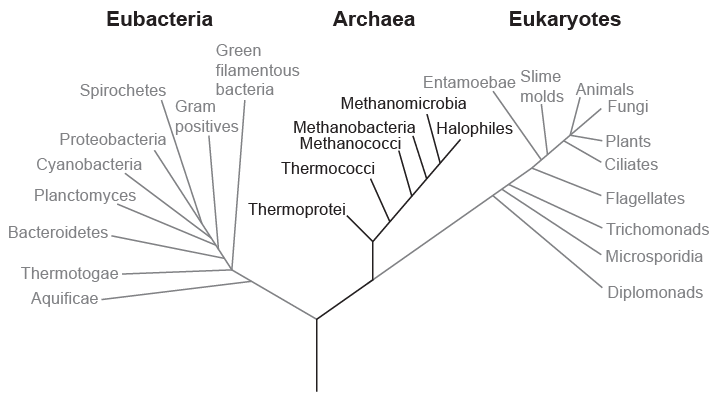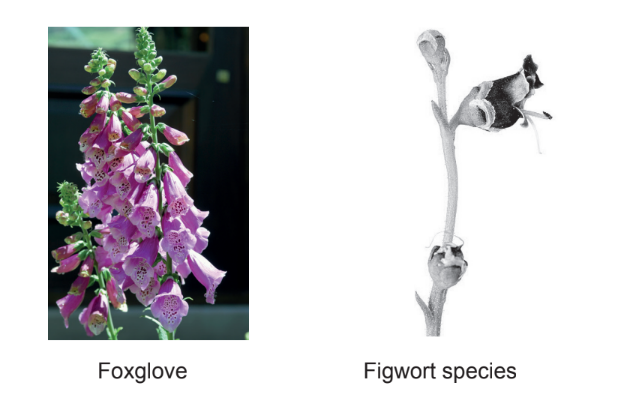IB Biology SL (Standard level)- 2024 – Practice Questions- All Topics
Topic 5.3 Classification of biodiversity
Topic 5 Weightage : 7%
All Questions for Topic 5.3 –Binomial System, Domains of Life, Hierarchy of Taxa, Classification, Plant Phyla, Animal Phyla, Vertebrate Classes, Dichotomous Keys, Past Nomenclatures, Archaea vs Eubacteria, Animal Complexity, Virus Classification
Question
A dichotomous key can be used to distinguish four types of plant. Which of the plants could be a bryophyte?

▶️Answer/Explanation
Ans: A
Question
A locust is an arthropod. For invertebrate groups, which recognition feature is found only in arthropods?
Bilateral symmetry
Jointed appendages
Wings
Segmented body
▶️Answer/Explanation
Ans: B

Jointed appendages are a recognition feature of arthropods because they are unique to this group of invertebrates. Jointed appendages allow arthropods to move their limbs in a wide range of directions, which gives them greater mobility and flexibility than other invertebrates. This feature has allowed arthropods to adapt to a wide range of environments and lifestyles, and has contributed to their incredible diversity and success as a group.
Which is a characteristic of both bryophyta and filicinophyta?
A. Vascular tissue
B. Membranous leaves
C. Release of spores
▶️Answer/Explanation
Markscheme
C
One characteristic that is shared by both Bryophyta (mosses) and Filicinophyta (ferns) is that they both lack seeds. Instead of seeds, these groups of plants reproduce by means of spores. Spores are tiny, single-celled structures that are produced by the plant and dispersed into the environment. When conditions are right, the spores germinate and grow into new plants. This method of reproduction is different from seed plants, which produce seeds that contain an embryo and are capable of surviving in a dormant state until conditions are right for germination. Another characteristic that both Bryophyta and Filicinophyta share is that they require moist environments for reproduction. This is because the spores of these plants need water to move and germinate, and the gametes (reproductive cells) of many species require water to swim to the egg and fertilize it. Overall, Bryophyta and Filicinophyta share several characteristics, including the lack of seeds and the requirement for moist environments for reproduction. These characteristics reflect adaptations to life on land and have contributed to the success and diversity of these groups of plants.
The diagram represents a cladogram of the family Procyonidae.

What would justify classifying these organisms into four different genera?
A. They live in different habitats.
B. They do not share any common ancestors.
C. There are enough differences between them.
D. The number of times that the species have split.
▶️Answer/Explanation
Markscheme
C
The sentence “there are enough differences between them” justifies the classification of these organisms into four different genera because the criteria for defining a genus is that it should contain a group of closely related species that share a set of distinctive characteristics. The fact that there are enough differences between the organisms in this family to justify their classification into four different genera suggests that there are significant morphological, behavioral, or genetic differences between them that set them apart from one another. By classifying them into different genera, taxonomists are able to more accurately reflect the evolutionary relationships between these organisms and provide a more precise framework for studying and understanding their biology.
A plant has cambium in its vascular tissue and pollen is produced in male cones. The plant disperses seeds but does not produce fruit. In which phylum does this plant belong?
A. Coniferophyta
B. Angiospermophyta
C. Filicinophyta
D. Bryophyta
▶️Answer/Explanation
Markscheme
A
This plant belongs to the phylum Coniferophyta because it has several characteristics that are typical of conifers. For example, the presence of cambium in the vascular tissue is a characteristic of gymnosperms, which is the group of plants that includes conifers. In addition, the production of pollen in male cones is also a characteristic of gymnosperms. Finally, the fact that the plant disperses seeds but does not produce fruit is another characteristic of gymnosperms. Conifers are a group of gymnosperms that are characterized by their needle-like leaves, their production of cones, and their adaptation to cold and dry environments.
Below is a phylogenetic tree of the three domains.

There are important differences between the three domains. Which of these domains have organelles?
A. Eubacteria and archaea
B. Archaea only
C. Eukaryotes and archaea
D. Eukaryotes only
▶️Answer/Explanation
Markscheme
D

In given reference image: (a) Organelles of animal cell & (b) Organelles of plant cell
The domain Eukaryotes has organelles because they have a more complex cellular structure compared to the other two domains, Eubacteria and Archaea. Eukaryotic cells contain membrane-bound organelles such as mitochondria, endoplasmic reticulum, Golgi apparatus, and lysosomes, which perform various functions such as energy production, protein synthesis, and waste removal. These organelles are not present in prokaryotic cells, which lack a nuclear membrane and other membrane-bound organelles. The presence of organelles in eukaryotic cells is one of the key features that distinguishes them from prokaryotic cells.
Question
The foxglove, Digitalis purpurea, was once classified in the figwort family. The figwort family has been reclassified and is now much smaller.

Why were species such as the foxglove moved into other families?
A. The appearance was too dissimilar.
B. The plants are found in different locations.
C. The genera were different.
D. The DNA sequences indicated different ancestry.
▶️Answer/Explanation
Ans:D
The foxglove, Digitalis purpurea, was once classified in the figwort family based on its morphological characteristics. However, when DNA sequences were analyzed, they indicated a different ancestry for the foxglove, which suggested that it should be placed in a different family. This is because DNA sequences provide a more accurate and objective measure of evolutionary relationships than morphological characteristics alone. By comparing the DNA sequences of different organisms, scientists can determine how closely related they are and use this information to classify them into different taxonomic groups. In the case of the foxglove, the DNA sequences suggested that it was more closely related to other plants in a different family, and this led to its reclassification.